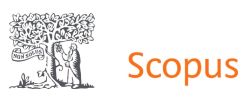JOURNAL DETAIL
Design and Research of Multi-outlet Microfluidic Chip Based on Pesticide Residue Detection
Paper Type |
Contributed Paper |
Title |
Design and Research of Multi-outlet Microfluidic Chip Based on Pesticide Residue Detection |
Author |
Longjiang Song, Yuxuan Geng, Ping Fu, Wenjie Zhao, Junfei Wu, Yalin Yuan and Luning Jia |
Email |
kdfuping@126.com |
|
Abstract: With excellent mixing efficiency, microfluidic chip technology has shown great development advantages and potential in pesticide residue detection. Aiming at the problems of limited sensitivity and insufficient integration automation degree of three-dimensional microfluidic chips in pesticide detection, a new type of microfluidic chip based on 3D printing technology was designed to improve pesticide detection accuracy, including 3 injection ports and 4 detection ports. The chip structure meets the expected goal of fully mixing test samples and detection reagents in laminar flow state. Three different deflector column structures and one control structure were designed, and the chip mixing performance was verified through simulation experiments and liquid mixing pre-experiments. The injection flow rates of 0.06 m/s, 0.09 m/s and 0.12 m/s for test samples and 0.12 m/s, 0.18 m/s and 0.24 m/s for detection reagents were set to detect the mixing effect of microfluidic chips under different conditions. Light curing 3D printing technology is used to print microfluidic chips based on materials. Through electron microscope observation, experimental test and simulation results, the chip printing accuracy error is within the established error limit, and has no significant impact on the experiment. The experimental results show that the microfluidic chip with circular flow guide column performs stably, and has the highest mixing efficiency and the best effect in simulation and pre-experiment. The experimental results show that the microfluidic chip with a circular flow guide column performs stably and has the highest mixing efficiency and the best effect in the simulation and pre-experiment. The “three-in-four-out” structure takes all four exits under the premise of taking into account the overall detection efficiency, effectively avoiding the realistic dilemma that the “two-in-one-out” structure results in high or low distortion in pesticide detection. The production path of microfluidic chip-based 3D printing can achieve efficient mass production, and the cost is far lower than photolithography, which has economic benefits and realistic conditions for application in pesticide residue detection. The results of this study expand a new idea for the design of microfluidic chip structure, provide a new carrier for pesticide residue detection, and provide an experimental basis for the application of microfluidic technology in the field of trace detection. |
|
Article ID |
e2025066 |
Received Date |
2025-02-15 |
Revised Date |
2025-06-28 |
Accepted Date |
2025-07-02 |
Published Date |
2025-08-26 |
Full Text |
Download |
Keyword |
microfluidic chip, chip structure design, pesticide residue detection, 3D printing |
Volume |
Vol.52 No.5 (September 2025) |
DOI |
https://doi.org/10.12982/CMJS.2025.066 |
Citation |
Song L., Geng Y., Fu P., Zhao W., Wu J., Yuan Y., et al., Design and research of multi-outlet microfluidic chip based on pesticide residue detection. Chiang Mai Journal of Science, 2025; 52(5): e2025066. DOI 10.12982/CMJS.2025.066. |
| View:391 Download:122 | |
RELATED ARTICLE
page: 105 - 121
Author:Faungchat Thammarakcharoen, Autcharaporn Srion, Watchara Chokevivat, Ruedee Hemstapat, Noppawan Phumala Morales and Jintamai Suwanprateeb
Vol.49 No.1 (Special Issue I : Jan 2022) View: 1,474 Download:455
Copyrights © Since 2021 All Rights Reserved by Chiang Mai Journal of Science










